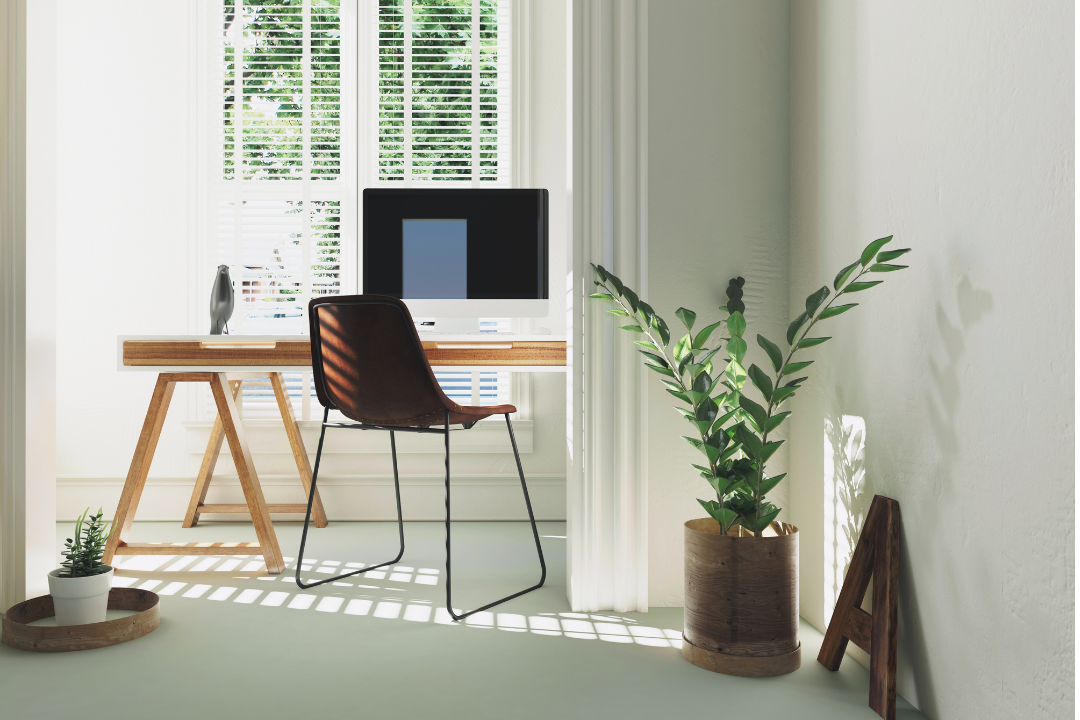White is a common colour in home design publications. It’s also there for a purpose: white is a blank canvas on which other things, such as your mid-century modern furnishings and that Asian-inspired painting you picked up at the car boot sale, can take centre stage.
Yes, there are certain white looks we’d love to see go away. (White sofas, for example.) However, there are other areas where white will always be appreciated: walls, doors, crown moulding, and yes, window blinds.
When it comes to white window coverings, Venetian blinds are a classic choice. But consider these ideas before you buy to make sure they’re the right blind for you.
The Basics of Venetian Blinds
Because they’re constructed from a succession of horizontal slats that hang from a headrail via a cord or decorative tapes, Venetian blinds are often known as horizontal blinds. You may tilt the slats up or down by tugging on the tilt cord, or you can open the blinds by pulling on the raising cord. When you raise your Venetians, the slats will stack flat against the headrail at the top of the window.
A Venetian blind may be as wide as 260cm. The slats might begin to bow in the middle if they are any wider. These curtains have a drop of up to 300cm, making them ideal for tall windows.
If you have a window that is more than 260cm wide, you’ll need to buy several pairs of Venetians and install them side-by-side to cover the full width of the window. This compromise may be worth it if you enjoy the look of white Venetian blinds, but there are drawbacks. Light can seep between the space where the two sets of blinds meet, requiring you to open both sets individually in order to raise your window blinds.
What Is the Difference Between White Venetian Blinds and Other Blinds?
There are several blinds to select from roller blinds, vertical blinds, and roman blinds. They’re all white, so why would you want white Venetian blinds instead of any other sort?
Light Control
The most light-controlling window treatment is Venetian blinds. You may angle the slats to direct the sun wherever you wish. To allow light into the room while preventing it from reaching your eyes, angle them up or down.
However, one of the major flaws of white Venetian blinds is their light-blocking capability. Venetians can block up to 95% of the available light but cannot provide total darkness. If you want to darken your room, even more, consider purchasing a blackout lining for your blind.
For the bedroom, blackout blinds are preferable to white Venetian blinds because they block out even the tiniest amount of light. However, if you want to wake up with a bit of natural light streaming in through the windows, go for white Venetians rather than blackouts.
Style
White Venetian blinds are an excellent way to add some flare to your home. White reflects light, so it will make your space seem brighter and more cheerful. Venetian drapes have also withstood the test of time – they’ve been used as a popular window covering for centuries. Furthermore, selecting a neutral tone prevents you from having to replace your window coverings every time you change your style.
Plantation shutters or blinds, on the other hand, have a similar appearance to white Venetians and open out into the space (like a door), necessitating that your home furniture is removed from your windows.
Important Considerations
The benefits of selecting a white Venetian blind are numerous. They’re long-lasting, classic, and simple to install. However, there are a few practical reasons why you might want to go with a different blind.
If you have wide windows or windows that open sideways (instead of up and down), vertical blinds will be simpler to install and operate.
If you live in a house with older windows that have fewer panes, a roman shade can assist maintain your home warmer in the winter and may even save you money on your power bill.
Types of White Venetian Blinds
You’ve now measured your lifestyle (who knew window blinds required this much introspection?) and decided that white Venetians are perfect for you. Choosing your material is the next step.
Blinds made of aluminium, wood, and fake wood are all available in three materials: aluminium, wood, and imitation wood.
- Aluminium Venetian Blinds
The most cost-effective option is to use aluminium Venetian blinds. They have smaller, 25mm slats than the larger 50mm slats on wooden and imitation wood blinds, allowing more light in. Aluminium is resistant to rusting and warping, making it suitable for a conservatory where the heat from the sun may warp real or fake wood.
- Faux Wood Venetian Blinds
Vinyl or PVC are used to make faux wood blinds. High-quality fake wood blinds look and feel like real wood, but they’re more waterproof, making them ideal for kitchens and bathrooms.
- Real Wood Venetian Blinds
Wooden Venetian blinds provide a traditional, natural aesthetic. Whitewood blinds are often painted to go with your chosen colour scheme and come with a matching valance to protect the headrail.
Real wood blinds have the beauty of the natural wood grain, but they are more difficult to maintain than fake or simulated woods.
Real wood, unlike fake wood, must be cleaned with a specific cleaner. If it’s in a humid environment like a kitchen or bathroom, real wood can become warped. Choose real wood for the living room and dining area so you’ll have an easier time keeping it clean.
